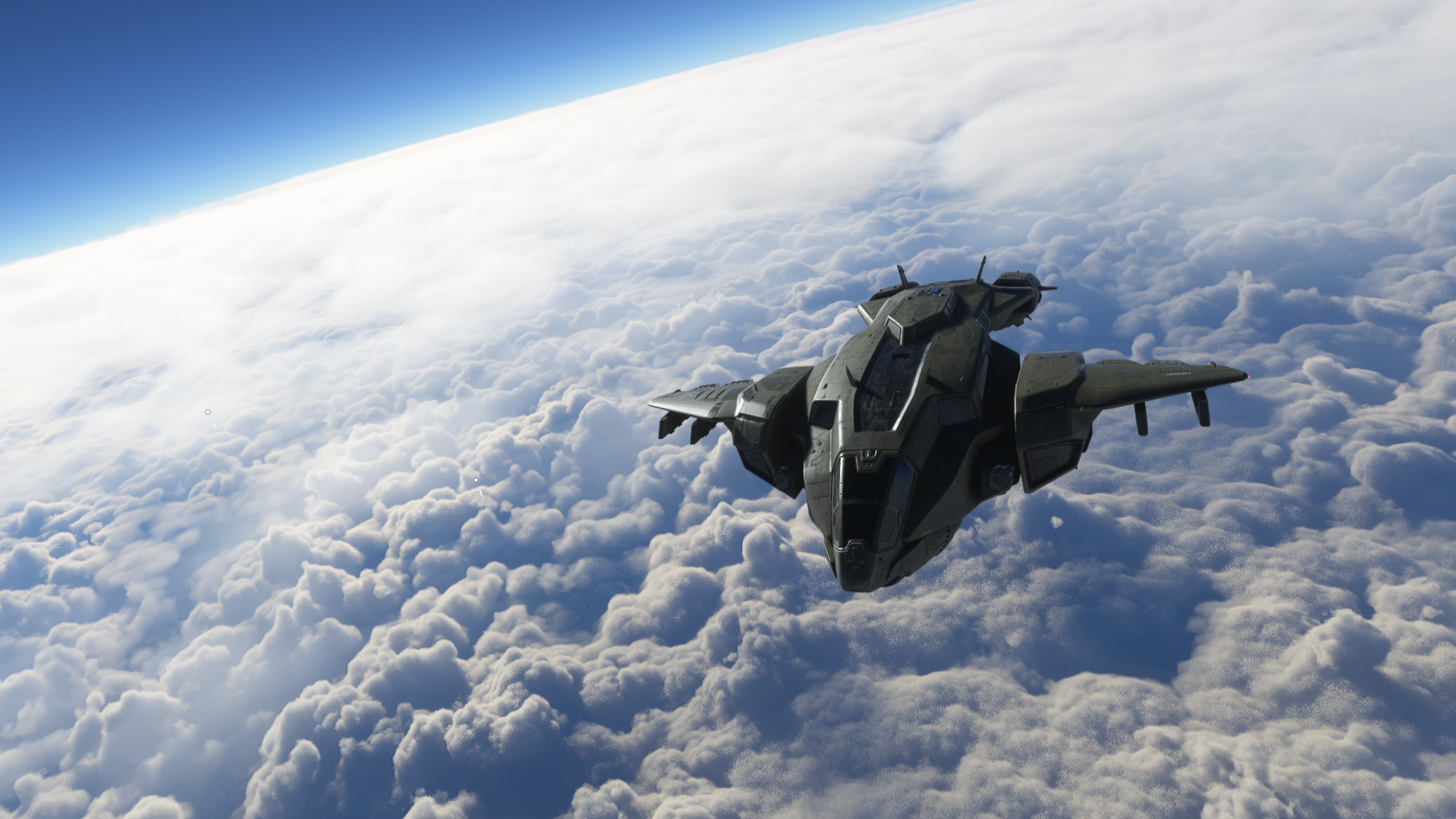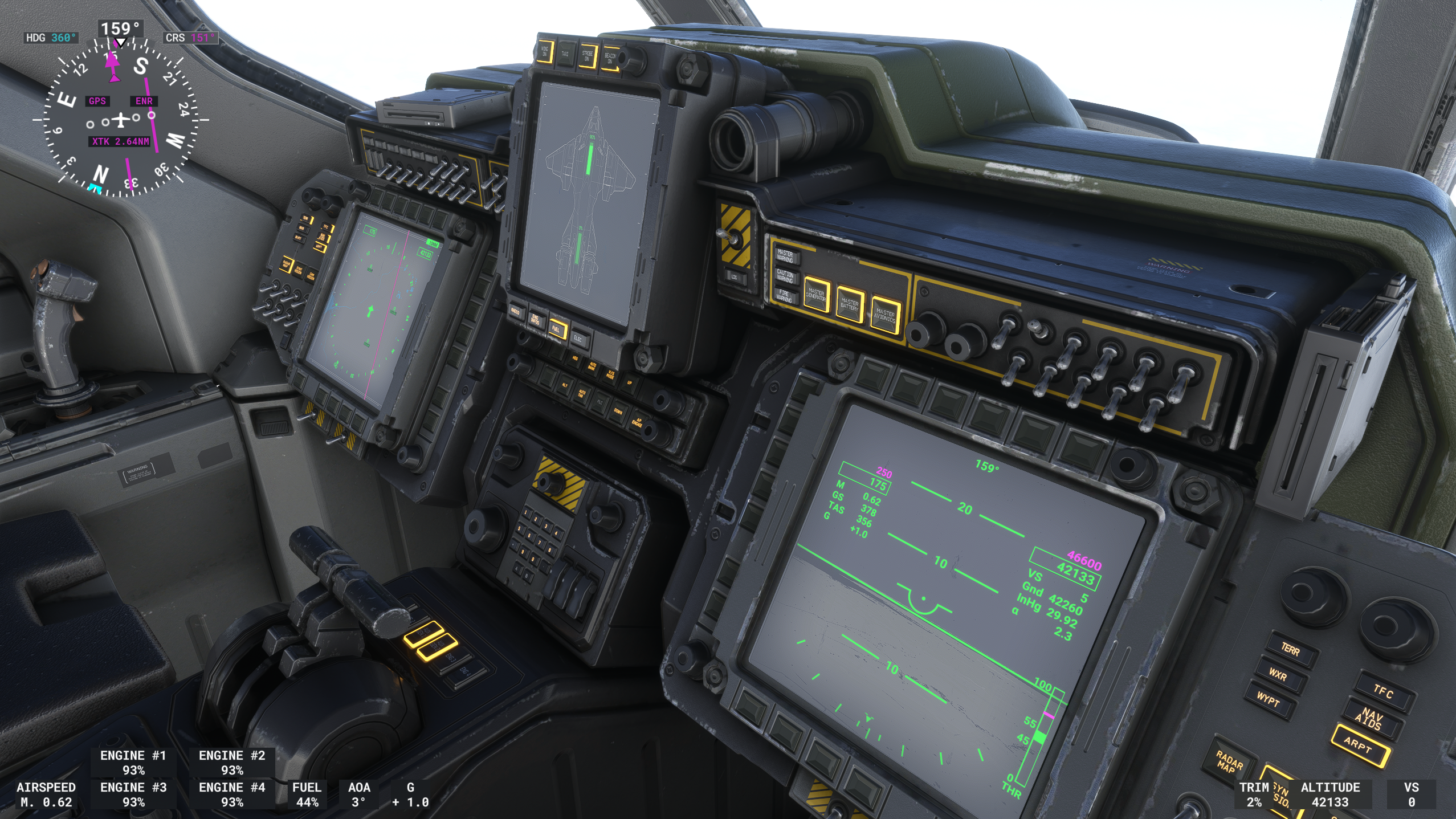Flying a Halo spaceship in Microsoft Flight Sim shouldn't work this well
"You know our motto, we deliver!"

I've been here before, waiting for takeoff at Edinburgh International. The sky is cloudy, the air buzzing with the sound of jet engines, anticipation building for a quick hop down to London. The cabin lurches, and we take off—not forwards, but straight up. Because instead of an Easyjet, we're taking our hols in the front seat of Halo's iconic Pelican dropship.
Over the weekend, Microsoft announced that it was adding Halo's hefty spaceship to Microsoft Flight Simulator as a free download, letting you explore the game's 1:1 recreation of the Earth in Master Chief's favoured aircraft. It's not entirely unprecedented, of course—Forza Horizon has long let you cut about real world landscapes in the Halo Warthog.
But that makes sense, in a strange way. Horizon is an arcade sandbox, and the Warthog doesn't feel out of place as an absurdly big jeep with which to stomp all over Mexico. Flight Sim on the other hand is deathly serious, a complex mechanical beast that aims to perfectly map the controls, aerodynamics, flight routes and traffic of real-world aircraft travelling to real-world airports.
Frankly, it's that self-seriousness that makes the whole nonsensical affair work.

By putting a big daft UNSC spaceship in Flight Sim, the Pelican is given a weight of respect and presence as a vehicle we've never seen before. In the Halo games, it's a vessel for getting you between missions, but you never have to think about how it works. Microsoft Flight Sim's challenge, then, is to figure out how to map a flight model meant for jet liners and single-user propeller craft to a heavily-armoured fusion-powered VTOL spaceship.
It does this by giving the Pelican two distinct flight modes. A VTOL mode that uses the thrusters for vertical lift while letting you pilot freely in any direction horizontally, and a cruise mode that acts more like a traditional jet. The VTOL mode feels a little janky, a fact that belies the fact MFS wasn't built for this kind of imaginary craft, but it does let you easily explore the game's mostly-accurate cities with absolute ease.
Once cruising, however, the Pelican works flawlessly. It's a heavy craft with big engines that give it a unique flight feel, all while keeping in mind the little things like airspeed, lift, pressure, turbulence, and stresses on the craft that you'd have to consider in a more contemporary aeroplane. Once you're at cruising altitude, the thing basically flies itself.
The biggest gaming news, reviews and hardware deals
Keep up to date with the most important stories and the best deals, as picked by the PC Gamer team.
Cracking open the rear window for some air https://t.co/w5TG5xTy3b pic.twitter.com/8yzepcsSEGJune 14, 2022
Look, I don't know aeroplanes. But by giving me a ship I recognise, the Pelican lets me truly appreciate the depth of MSFS's simulation, even compared to space sims like Elite: Dangerous (which are only simulationist as far as needed to sell the spacefaring fantasy). Almost every button in the cockpit has a function, from monitoring fuel and changing altitude targets to opening the cargo bay door and de-icing the engine pods.
You can pull the camera out of the chair and explore the airlock chamber and crew/cargo compartment. The entire thing even lurches and groans with the sounds of a machine a few centuries ahead of the time. By treating one of my favourite fictional vehicles with the level of care and consideration usually only afforded to real-world machines, I'm given a new perspective on a setting I love.
This is, of course, something that only happens because Microsoft owns both Halo and MSFS. But I want to see more fictional vehicles recontextualised in this straight-faced light. What does a Warthog or Mass Effect MAKO look like in a simulation racer? What does a transatlantic flight feel like in the cockpit of one of Destiny 2's many absurd ships?
We may never know. But thanks to Microsoft Flight Sim, I'm about to find out what it feels like to hurl a Pelican into the heart of an arctic storm. See you on the other side!

20 years ago, Nat played Jet Set Radio Future for the first time, and she's not stopped thinking about games since. Joining PC Gamer in 2020, she comes from three years of freelance reporting at Rock Paper Shotgun, Waypoint, VG247 and more. Embedded in the European indie scene and a part-time game developer herself, Nat is always looking for a new curiosity to scream about—whether it's the next best indie darling, or simply someone modding a Scotmid into Black Mesa. She also unofficially appears in Apex Legends under the pseudonym Horizon.

